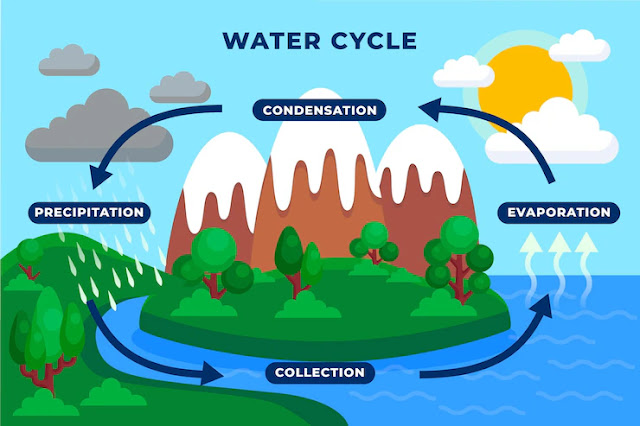The Fascinating Process of Cloud Formation
Clouds are one of nature’s most captivating displays, transforming the sky with their ever-changing shapes and patterns. From fluffy white cumulus clouds to ominous dark storm clouds, they play a critical role in Earth’s weather and climate systems. But how do clouds form? Let’s dive into the science behind this atmospheric phenomenon in a way that’s clear, engaging, and easy to understand.
What Are Clouds?
Clouds are collections of tiny water droplets or ice crystals suspended in the atmosphere. They form when water vapor, an invisible gas, undergoes processes that transform it into visible liquid or solid particles. These particles group together, creating the clouds we see drifting across the sky. The formation of clouds is a dynamic process influenced by temperature, humidity, and air movement.

The Key Ingredients for Cloud Formation
Cloud formation requires three main components:
- Water Vapor: The starting point for clouds is water vapor, which is water in its gaseous form. It’s present in the air due to evaporation from oceans, rivers, lakes, and even plants through a process called transpiration.
- Cooling Air: For water vapor to turn into liquid droplets or ice crystals, the air must cool. As air cools, its ability to hold water vapor decreases, leading to condensation.
- Condensation Nuclei: Tiny particles like dust, pollen, or smoke act as surfaces for water vapor to condense onto. These particles, called condensation nuclei, are essential for cloud droplets to form.
The Step-by-Step Process of Cloud Formation
Cloud formation is a multi-step process driven by changes in the atmosphere. Here’s how it happens:
1. Evaporation and Humidity
Water from Earth’s surface—oceans, lakes, rivers, and even plants—evaporates due to heat from the sun. This water vapor rises into the atmosphere, carried by warm air. The amount of water vapor in the air is known as humidity. When humidity levels are high, there’s more water vapor available for cloud formation.
2. Rising Air
Warm air is lighter than cold air, so it rises. As it ascends, it carries water vapor with it. This upward movement can be caused by several factors:
- Convection: The sun heats the ground, warming the air above it, which then rises.
- Topography: Air is forced upward when it encounters mountains or hills (orographic lift).
- Weather Fronts: When warm and cold air masses meet, the warmer air is pushed upward.
- Convergence: Air masses come together, forcing air upward.
3. Cooling and Condensation
As air rises, it encounters lower atmospheric pressure and cooler temperatures. The decrease in temperature reduces the air’s capacity to hold water vapor. When the air reaches its dew point—the temperature at which it becomes saturated—water vapor begins to condense into tiny liquid droplets. This condensation occurs around condensation nuclei, forming the building blocks of clouds.
If temperatures are low enough, water vapor may turn directly into ice crystals, a process called deposition. This is common in high-altitude clouds like cirrus cloud.

4. Cloud Development
Once condensation begins, countless tiny droplets or ice crystals form, creating a visible cloud. The type of cloud that develops depends on factors like temperature, humidity, and the altitude at which the cloud forms. For example:
- Cumulus Clouds: Form on clear, sunny days when warm air rises rapidly, creating puffy, white clouds.
- Stratus Clouds: Form in stable, moist air, spreading out in layers to create overcast skies.
- Cirrus Clouds: Form high in the atmosphere where temperatures are very cold, resulting in wispy clouds made of ice crystals.
Types of Clouds and Their Formation
Clouds are classified based on their shape, altitude, and appearance. Here are a few common types and how they form:
- Cumulus Clouds: These puffy, white clouds form on warm days when strong upward air currents (thermals) carry moist air high into the atmosphere. If the air continues to rise and cool, cumulus clouds can grow into towering cumulonimbus clouds, which bring thunderstorms.
- Stratus Clouds: These low, gray, blanket-like clouds form when a large mass of moist air rises slowly and cools over a broad area, often leading to drizzle or light rain.
- Cirrus Clouds: Found at high altitudes (above 20,000 feet), these thin, wispy clouds form when water vapor turns directly into ice crystals in cold, dry air.
- Nimbus Clouds: These are rain-producing clouds, like cumulonimbus (thunderstorms) or nimbostratus (steady rain), formed when moist air cools significantly and holds large amounts of water.
Why Clouds Matter
Clouds are more than just beautiful sky decorations. They play a vital role in Earth’s climate and weather:
- Climate Regulation: Clouds reflect sunlight back into space, helping to cool the planet, while also trapping heat, which can warm the Earth.Weather Indicators: Clouds signal upcoming weather changes. For example, towering cumulonimbus clouds often mean a storm is brewing.
- Water Cycle: Clouds are a key part of the water cycle, delivering precipitation like rain or snow that sustains life.

Fun Facts About Clouds
- Clouds can weigh millions of pounds due to the vast number of water droplets or ice crystals they contain, yet they float because the tiny particles are spread out and supported by air currents.
- The average cloud droplet is smaller than the width of a human hair!
- Lenticular clouds, which look like UFOs, form near mountains due to unique wind patterns.
Conclusion
The formation of clouds is a remarkable interplay of water, air, and temperature. From the evaporation of water to the condensation of vapor into droplets or ice crystals, this process shapes the skies and influences our weather. Next time you gaze at a cloud, whether it’s a fluffy cumulus or a wispy cirrus, you’ll know the science behind its creation—a small but stunning piece of Earth’s atmospheric puzzle.
